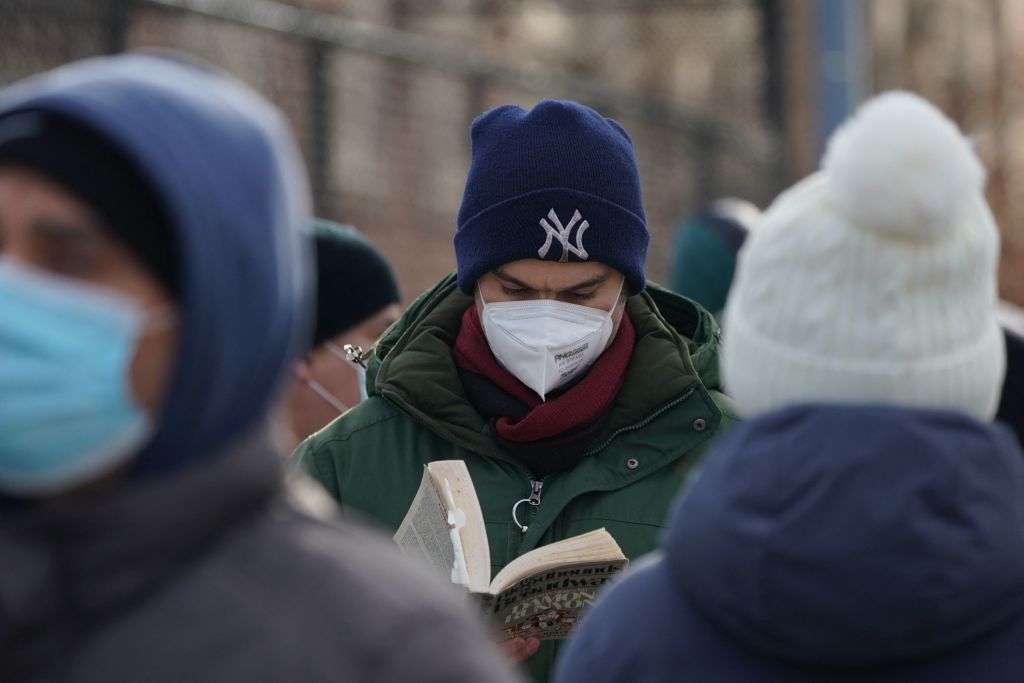The experience of having Covid is, by now, well-documented. You spend seven to ten days in your room or house feeling ill and sorry for yourself. The world outside becomes a distant dream, and one of the few pleasures of spending twenty-four hours a day in bed is the time to read.
This winter, the Omicron bell tolled for me — as it seemed to do for half of the global population. I was very lucky with the virus: after two days of unbelievable complaining and texting everyone I knew to tell them I was either like Beth in Little Women or a fevered Marianne in Sense and Sensibility, I recovered from my gothic heroine-like swoon and set about ploughing through novels.
At the outset, there were endless articles and tweets about what one should read during a pandemic. Alongside the many now-is-the-time-to-read-War-and-Peace tweets, an interest in “plague literature” bloomed. Daniel Defoe’s A Journal of the Plague Year (1722) was much-touted as an option, while publishers raced to re-print Albert Camus’s The Plague (1947) following a dramatic uptick in sales. It didn’t matter that Defoe’s plague was significantly more dramatic and virulent than ours, or that Camus’s Peste is as much an allegory for the French resistance in the Second World War as it is about a disease — we all wanted to read something that felt relevant to our current predicament.
But as we sail into the third year of the virus, we no longer need to reach for earlier pandemics or fictionalized metaphors. This winter, a small handful of coronavirus books were published.
Sarah Hall’s Burntcoat was on shelves in November alongside Gary Shteyngart’s Our Country Friends, while Sarah Moss’s The Fell was published in the UK in the autumn but will be out in the US in March.
The Fell is a story of pandemic anxieties. It dates from a time when taking a coffee on a walk felt illegal as it implied the excursion was no longer purely exercise, or when people would leave their GPS watches at home when heading out for the second time in a day for fear that some government body could track them. The virus is no allegory as it is in Camus’s The Plague. There is no dystopia and no release — only the poignant sense that a Covid-stricken globe needs no extra fiction to make it so disconcerting.
It is Burntcoat that is the stand-out of these pandemic novels. Sarah Hall mixes descriptions of an illness so much worse than our current disease with the figure of a Barbara Hepworth-like sculptor and her dramatic life to create a novel that is about so much more than one virus, or one moment in history.
Burntcoat’s Edith Harkness, an elderly artist living in Scotland, is in her last days as she relapses into the illness she caught years earlier in the pandemic. As she remembers her life — art school, her mother, her lover Halit — illness, death, and creation become intimately intertwined. Hall does not flinch from the realities of a virus, but is tentative about making the pandemic too immediately recognizable or relatable. The novel exists in the uncanny: it is neither faithful representation nor pure allegory. It is haunting, emotional, and, at points, completely eviscerating.
But one of the largest ironies of “pandemic literature” (and articles like this) is that when you are truly ill, reading about diseases and sicknesses is unlikely to make you feel better. Nor is reading about a pandemic that has a much higher fatality rate than our own likely to calm you down.
And so, in recent weeks, I’ve become all but obsessed with the novels of Jean Rhys. Most famous for Wide Sargasso Sea (1966) — the famous story of Mr. Rochester’s first wife in Jane Eyre (1847) — Rhys also wrote a host of novels about down-at-heel, alcoholic, melancholy women living in Paris and London (either the aptly named Worlds’ End or Bloomsbury).
These women are not living in the middle of a pandemic, and they are free to leave their rooms as often as they want. If they are sober enough to get out of bed, that is. But despite these differences in situation, their predicament is remarkably similar.
Take this description from After Leaving Mr Mackenzie: “Julia was not altogether unhappy. Locked in her room — especially when she was locked in her room — she felt safe. She read most of the time.” Julia spends most of the novel feeling “not altogether unhappy” but rather depressed in different rented bedrooms living off the money of men she has slept with in the past, and a similar plot description could be used for Quartet, A Voyage in the Dark, and Good Morning, Midnight.
Now, call me a pessimist, but I think there’s something profoundly optimistic about the fact that — whether it be pandemics, lover’s tiffs, or lack of money — authors have always found reasons to confine their characters to limited spaces, and to make them miserable at the sight of the same four walls and ceiling.
There have always been brilliant books limited to small spaces and situations. If the latest wave of the pandemic has left you isolated inside, don’t read coronavirus literature — I can suggest plenty of other books to be depressed by.
Francesca Peacock is deputy online editor of The Critic.


















